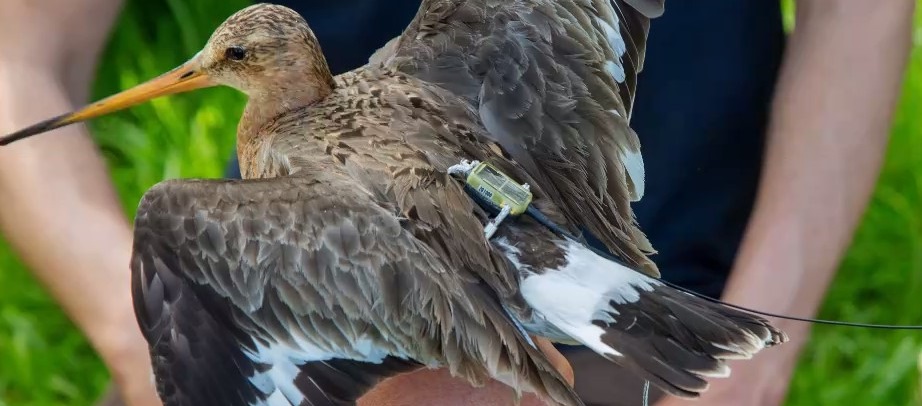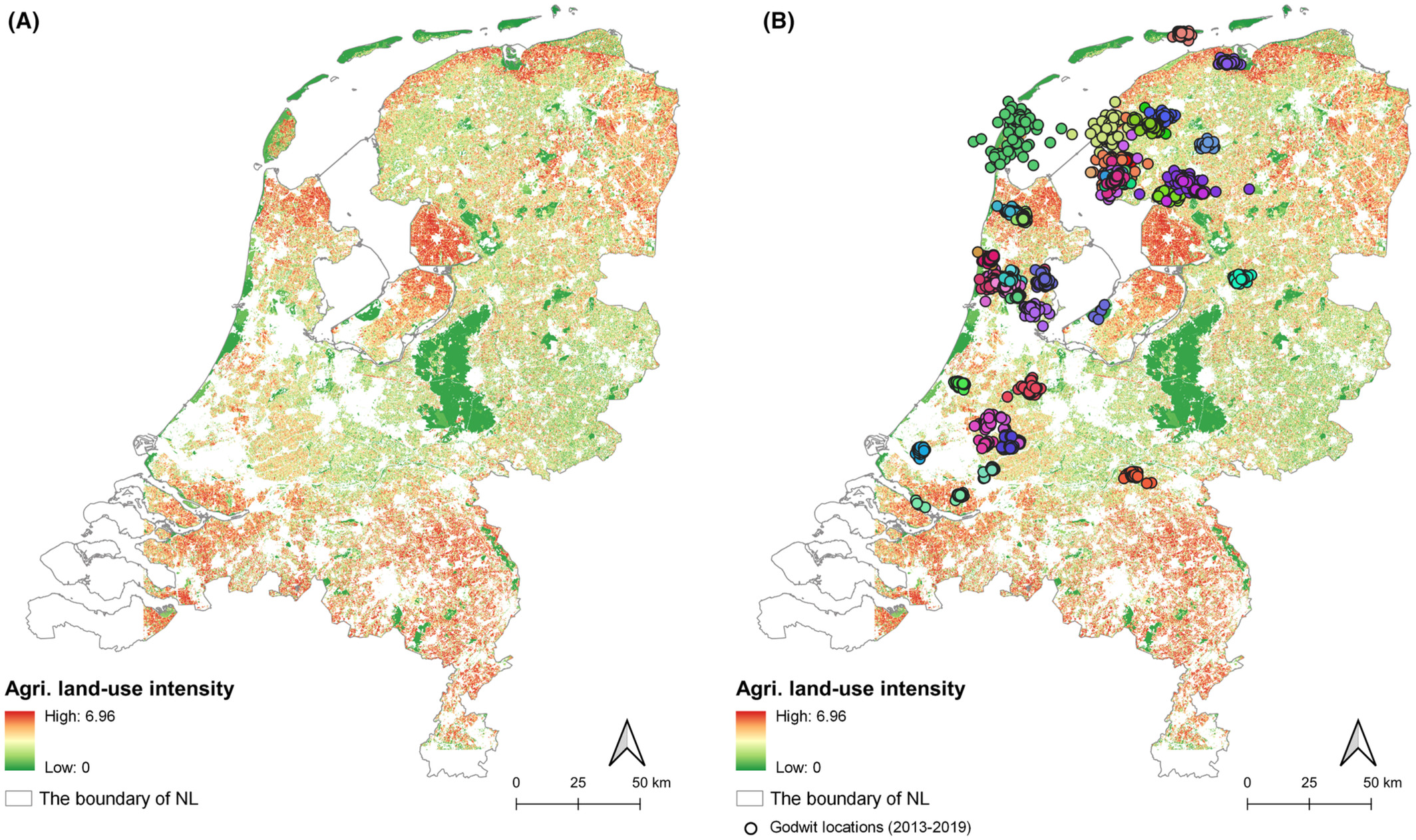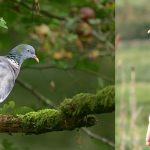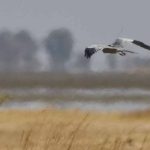← Back
Black-tailed godwits are breeding in areas of intensive agriculture

Some bird species like the black-tailed godwits are nesting on ground, in grasslands. However, across all of lowland Europe, such areas have been transformed for intensive agriculture. Tracking by Argos helped to determine whether there is any space left in those highly cultivated areas for such farmland-specialists.
Black-tailed Godwits (Limosa limosa) are migratory birds, ground-nesting on grasslands. They are foraging on soil-macrodetritivores as adults and on insects as chicks. As an emblematic, national bird of The Netherlands (a country with a strong ornithological tradition), black-tailed godwits have been much studied (see Juveniles black-tailed godwit tracked, Black-tailed godwits’ different migration behaviours).
The Dutch population of black-tailed godwits has shown a more than three-quarter decline since the late 1960s. It has become clear that agricultural intensification, characterized by mechanization, deep drainage and use of artificial fertilizers and agrochemicals, negatively impacts this population size. The transformation of moist, flower-rich meadows thriving with insects into industrial monocultures has been too much for black-tailed godwits.
Tracking breeding black-tailed godwits
From 2013 to 2019, 57 breeding godwits were tracked with Argos-GPS solar-PTTs. 20 were tagged in The Netherlands, and 37 were tagged in the Iberian Peninsula. Some were tracked during several seasons, so a total of 94 breeding events were in fact monitored. The study extended to the whole Netherlands, and statistics were thus made nationwide.
More info about animal tracking with Argos
Black-tailed godwits recorded within the boundary of The Netherlands from March to July were considered breeding, with some extension when an individual stayed longer, considering it up to the time it had left the breeding ground permanently, or shortening when it left earlier.
The breeding home range represents the area that an animal uses during this phase. The locations were used to estimate their core (50%) and home ranges (90%) during breeding. How godwits select habitats in relation to agricultural land-use intensity at three different spatial scales (0.5, 5 and 50 km) was investigated.

(A) Radar remotely sensed agricultural land-use intensity index, The Netherlands, calculated from C-SAR time series 31 March to 22 August 2016. (B) The same with the recorded locations from the 57 tracked godwits during the study period with a colour representing an individual. (from [Li et al., 2023])
Intensive agricultural lands are not used by breeding black-tailed godwits
The black-tailed godwits breeding in The Netherlands actively selected areas with lower land-use intensity than what was generally available. Moreover, when they did breed in intensive agricultural lands, the study shows that they would have larger home ranges. This might be a way to compensate for insufficient resources in those intensively cultivated grasslands.
The black-tailed godwits are representative of a number ground-nesting farmland birds, with which it shares breeding habitats. The choice of these tagged godwits suggests that land-use intensity of most of The Netherlands has become too high for godwits and ecologically similar birds.
The study concludes that to save black-tailed godwits, agriculture has to put again value on what this analysis shows to matter for godwit: a relative low intensity of use. The entire wet-grassland ecosystem, supporting a rich assemblage of vegetation, insects and birds, and high-quality food production, should benefit from this, too. The authors’ toolbox – continuous animal-tracking combined with remotely sensed land-use intensity – can illuminate aspects of agricultural intensification and their effects on the characteristic species of such landscapes.
Reference & link
- Li, Y., Piersma, T., Hooijmeijer, J. C. E. W., & Howison, R. A. (2023). Land-use intensity impacts habitat selection of ground-nesting farmland birds in The Netherlands. Ecological Solutions and Evidence, 4, e12201. https://doi.org/10.1002/2688-8319.12201
- https://www.globalflywaynetwork.org/flyways
Main Photo: an equipped black-tailed godwit (credit Sijmen Hendriks)


